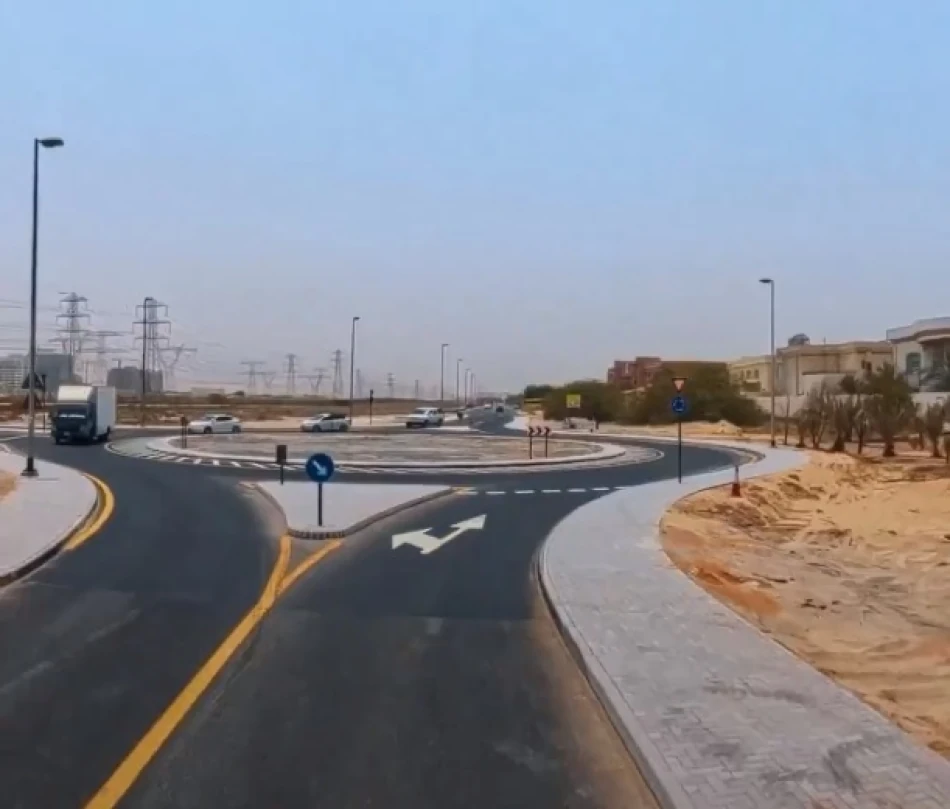
Dubai Roads Authority Implements Traffic Improvements in Nad Al Hamr
Dubai Accelerates Infrastructure Development with New Traffic Improvements in Nad Al Hamar
Dubai's Roads and Transport Authority (RTA) has completed new traffic enhancements in the Nad Al Hamar district, including a strategically positioned roundabout at the intersection of Street 410 near the village entrance. The project represents another step in Dubai's systematic approach to urban infrastructure modernization, targeting improved traffic flow and enhanced road safety as the emirate continues its rapid population and economic growth.
Strategic Infrastructure Investment Amid Urban Expansion
The completion of this roundabout project reflects Dubai's proactive stance on infrastructure development, particularly in residential and mixed-use areas experiencing increased density. Nad Al Hamar, traditionally a quieter district, has seen growing residential development and commercial activity, necessitating upgraded traffic management solutions.
The timing of these improvements aligns with Dubai's broader urban planning strategy, which emphasizes staying ahead of infrastructure demands rather than reacting to congestion problems. This approach has become a hallmark of the emirate's development model, distinguishing it from cities that struggle with retrofitting inadequate road networks.
Economic and Investment Implications
Property Market Impact
Infrastructure improvements in areas like Nad Al Hamar typically generate positive effects on local property values and rental yields. Enhanced accessibility and reduced traffic congestion make residential and commercial properties more attractive to both residents and businesses, potentially boosting the area's investment appeal.
Business Development Catalyst
Improved traffic flow often serves as a catalyst for commercial development, as businesses prioritize locations with reliable access for customers and logistics. The new roundabout could encourage retail and service sector expansion in the area, contributing to local economic diversification.
Regional Infrastructure Comparison
Dubai's continuous infrastructure investment contrasts with many global cities that face budget constraints for road improvements. While cities like Singapore and Hong Kong have implemented sophisticated traffic management systems, Dubai's approach emphasizes physical infrastructure expansion alongside smart traffic solutions.
The emirate's infrastructure spending patterns mirror those of other Gulf states like Qatar and Saudi Arabia, where oil revenues have historically funded extensive public works projects. However, Dubai's infrastructure investments increasingly focus on economic diversification and long-term sustainability rather than purely expansion-driven projects.
Long-term Urban Planning Strategy
This roundabout project forms part of Dubai's comprehensive road network development plan, which aims to accommodate the emirate's projected population growth and economic expansion through 2040. The RTA's systematic approach to identifying and addressing traffic bottlenecks before they become critical problems demonstrates sophisticated urban planning capabilities.
The focus on safety improvements alongside traffic flow optimization reflects evolving priorities in urban transportation planning, where reducing accident rates and improving pedestrian safety carry equal weight with vehicle throughput considerations.
 Sara Khaled
Sara Khaled







